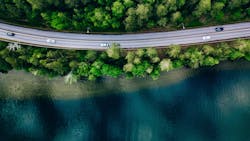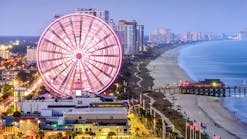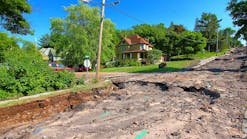New research from the University of British Colombia – Okanagan (UBCO) suggests that an increasing amount of microplastics from tires and roadways are ending up in lakes and streams.
Researchers from the UBCO School of Engineering developed a conceptual framework to model the potential contamination from tires and roadways. Their findings suggest that more than 50 tons of tire and road wear particles are released into waterways annually in areas like the Okanagan.
“The results are quite significant,” says Haroon Mian, a UBC postdoctoral research associate and study lead author. “It’s especially alarming considering that this microscopic waste can contaminate our freshwater sources.”
Both synthetic rubber and vulcanized natural rubber are considered forms of elastomeric polymers contributing to microplastics. It isn’t simply the rubber that causes contamination, says Mian.
“Over time, all of those materials begin to break down and can release chemical additives that affect aquatic species,” he explains.
While some of the materials end up in the atmosphere, the majority of the tire and road wear particles are spread across roadways and eventually end up in aquatic environments. The results of his study indicate that almost 15 tons of tire and road wear particles can be transmitted to lake surface water each year, he adds.
“This analysis focused on a small section of highway in the BC interior, but the findings suggest that other regions across Canada may experience the same challenges with this type of contamination,” says Mian. “A more uniform and comprehensive management and treatment strategy must be developed to limit the possible environmental ramifications.”
As part of his research, Mian also conducted a scenario-based assessment to estimate tire and road wear emissions by considering various real-time factors such as tire and roadway degradation in the environment and seasonal variations.
The report recommends implementing tire wear labels and standardization policies, adopting tire pressure monitoring systems, and applying wetlands or roadside swales as a secondary runoff treatment.
The research appeared in the latest edition of Science of the Total Environment and was supported by Kal Tire and Mitacs.






